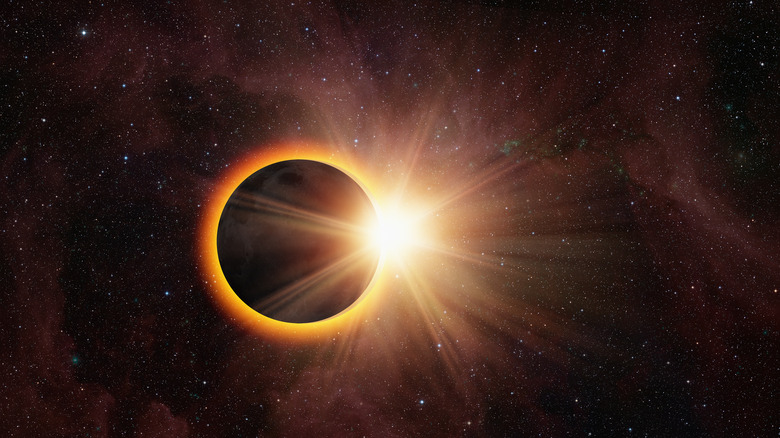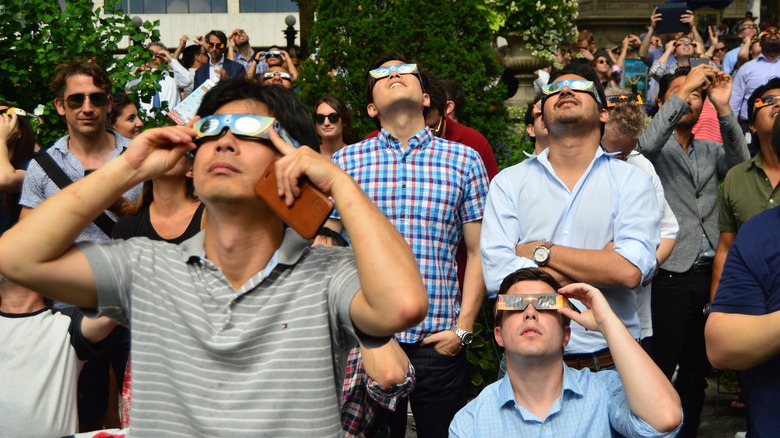This Is What Happens To Your Eyes If You Look At An Eclipse
Witnessing a total solar eclipse is not something you'll easily forget. When the sun, moon, and Earth line up at just the right angles, the moon casts a long shadow on the Earth. To people in the parts of the world that the shadow lands on, the moon appears to completely block out the sun. Admiring this rare phenomenon can be beautiful and awe-inspiring, but if you don't take the right precautions, you could end up permanently damaging your eyes.
Solar eclipses are not especially rare. There are usually around two to four solar eclipses each year (via NASA). But because solar eclipses are only completely visible in areas of about 50 miles in width each time they happen, your chances of seeing one in your lifetime are small. So it makes sense that when a solar eclipse is visible from your location, you'd want to see it. After all, history is full of accounts of ancient civilizations witnessing solar eclipses. But even the ancient Greek philosopher Socrates supposedly told his friend Plato that staring at an eclipse may cause eye injuries (via American Chemical Society). Luckily, we now have ways to keep our eyes safe during these spectacular events.
Use the right tools to view a solar eclipse
You've probably heard that it's a bad idea to stare directly at the sun. That's because our eyes are designed to be incredibly sensitive to light. Rod and cone cells in the retina collect light, and our brain transforms it into images that we recognize. The iris, the colorful part of the eye, gets bigger and smaller to allow safe levels of light into the retina (via National Eye Institute). The brighter the light is, the more the iris contracts. This is to keep the cells in the retina from getting damaged by too much light. Our eyes have adapted to adjust to normal levels of sunlight without being damaged. But the light we see is almost always indirect sunlight. The problems begin when our eyes try to collect direct light from the surface of the sun.
During most of the phases of a total solar eclipse, it is not safe to stare directly at it. That's because there are still parts of the sun that remain visible, and that direct sunlight is damaging to your eyes. However, during what's known as the totality of a total solar eclipse, it is safe to look. When the eclipse is in totality, the entire sun is blocked out, and only a ring of light coming from it is visible. Any other phase of a total solar eclipse should be viewed using a filter that complies with the ISO 12312-2 international standard for filters (via American Chemical Society). There is no point during a partial solar eclipse that it is safe to look at the sun without a filter. Doing so can cause partial or even full blindness. So unless you want to come away from viewing an eclipse with an unfortunate souvenir, take the proper steps to keep your eyes protected at all times.


